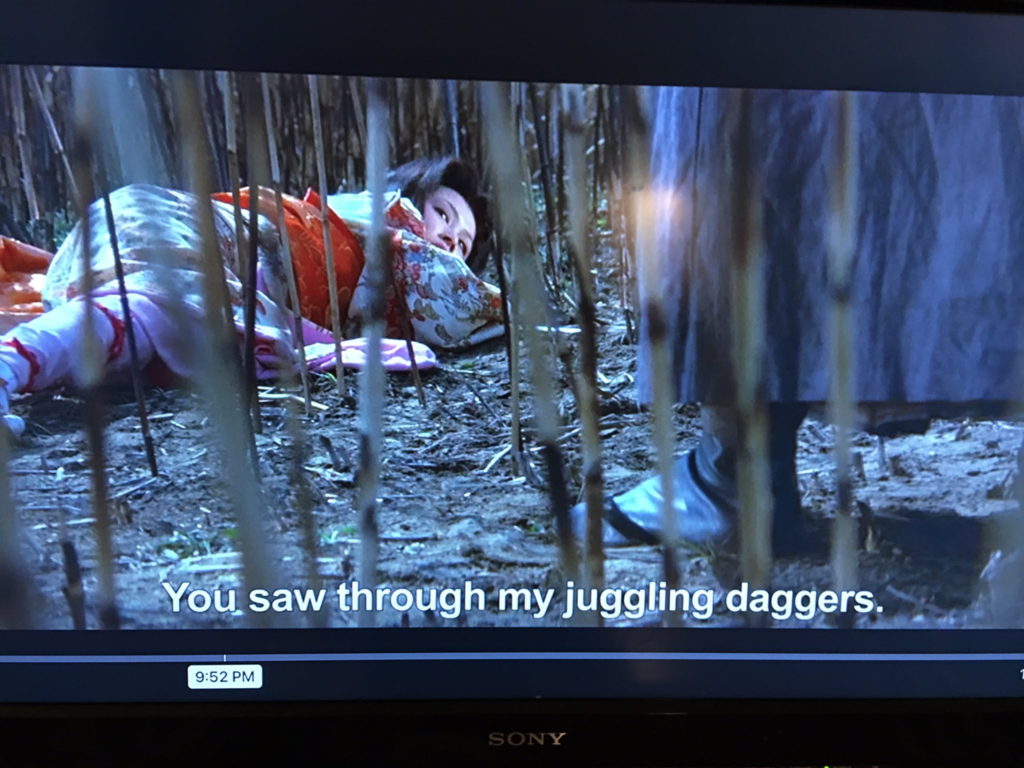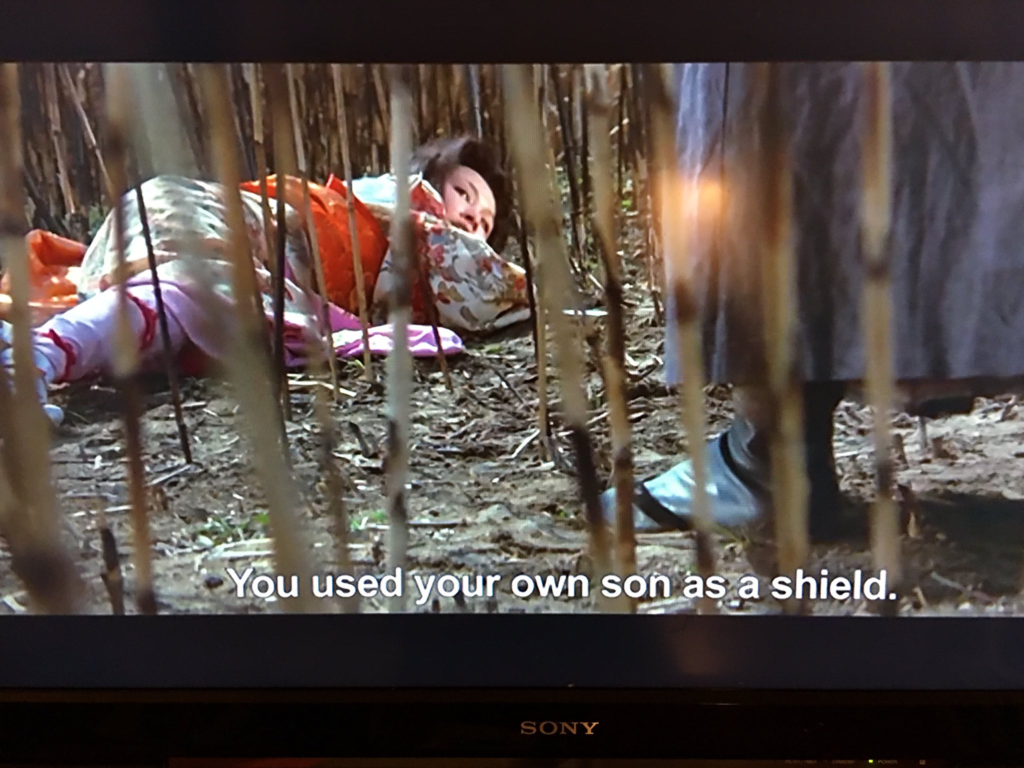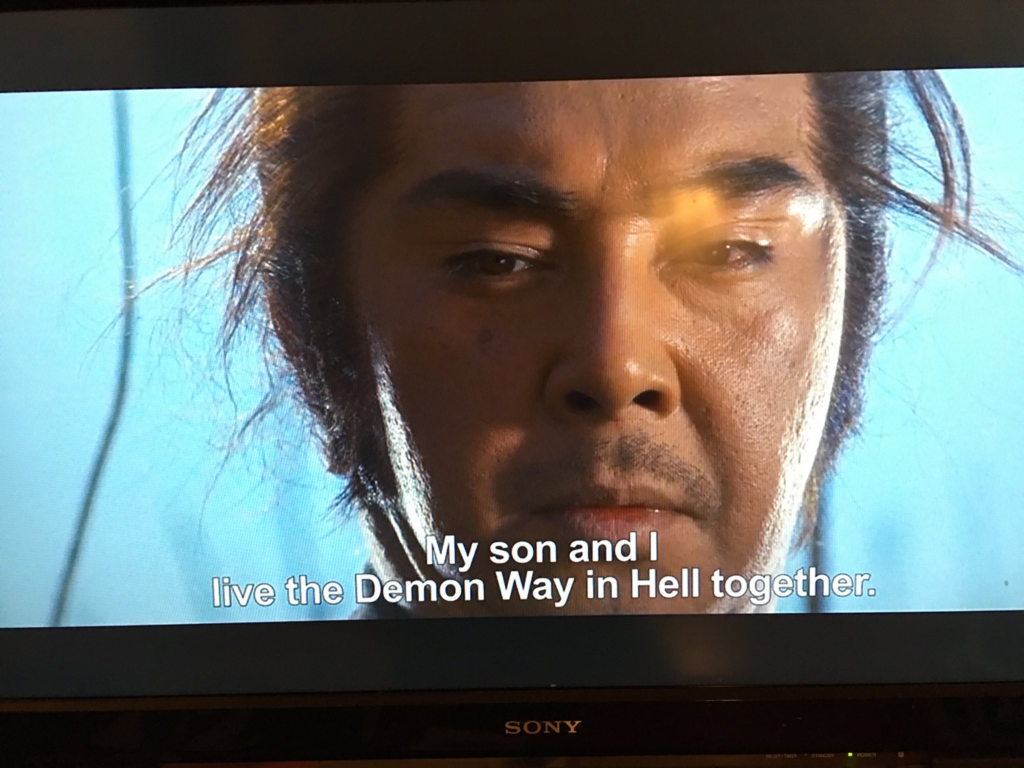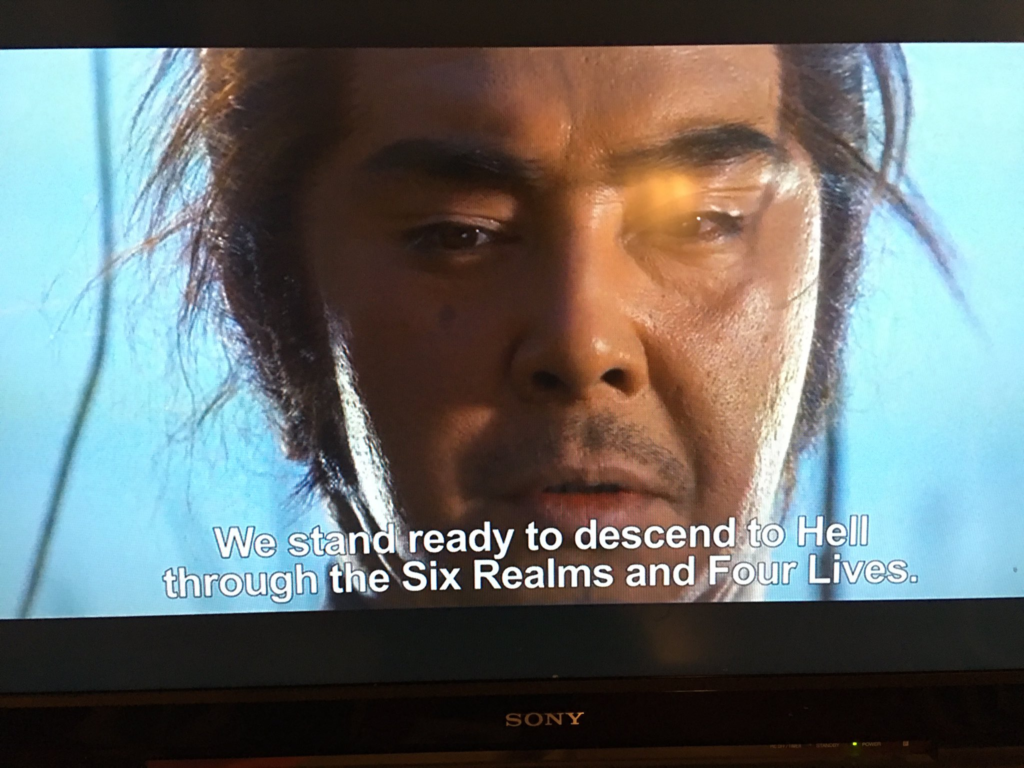Watching Lone Wolf and Cub: Sword of Vengeance (1972) I haven’t seen this in a while but there’s a lot of the Mandalorian interactions with now Grogu that are somewhat familiar to this film,
Ittō pushes the baby cart, and Daigoro observes scenes of nature, chooses between a ball and a sword, And eventually will take path of the ronin with his father, to “live like demons at the crossroads to hell”
“There are other obvious connections, like the Mandalorian and Ogami both being assassins for hire and Daigorō and the young alien both being far less weak and vulnerable than they first seem”
Even though both the chambara film version and the manga original were mega-blockbusters at least in Japan I’m still surprised that a non hero’s journey (not in a Campbell way) got greenlit by Disney and that the Mandalorian is pretty ok and will merit further viewings


https://tvtropes.org/pmwiki/pmwiki.php/Main/BadassAndBaby

https://imdb.com/title/tt0068816/… Watching Lone Wolf and Cub 2: Baby Cart at the River Styx: Great Ogami and Daigoro continue their quest for vengeance through meifumado, the spiritual way of “demons and damnation,” pursued constantly by the Shadow Yagyu clan and the shogun’s spies.
Walt Simonson, John Woo, Tarantino, Frank Miller, Rodriguez Genndy Tartakovsky (samurai Jack) and now Filoni and Favreau referencing, remaking, and rebirthing this, in all manner of new media. https://tvtropes.org/pmwiki/pmwiki.php/Manga/LoneWolfAndCub

I think Grogu is a little like a Japanese hakata doll in Lone Wolf and Cup and Gizmo from Gremlins more obviously and I’d be totally fine if the quest goes unresolved.


Lone Wolf and Cub 3: Baby Cart To Hades “Ogami Itto lets himself be tortured by yakuza to save a woman forced into prostitution and then accepts a contract to assassinate a corrupt feudal governor” https://imdb.com/title/tt0068817/?ref_=tt_mv_close
Ogami Itto: The true way of the warrior means to live by death amirite?

There was a time I could do 5 films in a day. Now I do 1 film in 8 hours

I’d be lucky if I finish the re-watch of the baby cart series by Friday. Golden opportunity in The Mandalorian to have a blind main character. We’ll do Zatoichi next week.

Buddhist-sutra-spouting samurai fiction. Impressively violent. The plot in this one not so different from Eastwood’s Unforgiven which seems to have gotten its own Japanese remake with Ken Watanabe Batman Begins, Inception This seems a little incestuous https://youtu.be/U5-503ia7nU

This series is better than I remember. It’s no cheapo explotation but funny, serious, lyrical while delivering.

https://imdb.com/title/tt0143348/… Watching Lone Wolf and Cub 4: Baby Cart in Peril Itto Ogami is hired by the Owari clan to assassinate a tattooed woman who is killing her enemies. Meanwhile, Baby Cart is separated when he follows a pair of traveling street performers outside of town.

Men-at-arms like the knights in Barbara Tuchman. Cowboys and samurais value loyalty, forbearance and “Contemptus mundi”
https://discogs.com/Hideakira-Sakurai-And-Kunihiko-Murai-Lone-Wolf-Cub-Music-from-the-Original-Motion-Picture-Soundtrack/release/7438223… It’d be interesting to own a copy of this. By part 4 in the series: Baby Cart in Peril, the Japanese influences disappear almost entirely to be replaced by 60s jazz and funk. Samurai “Shaft”
Weapons are introduced as if they are characters in their own right but this is the weakest entry so far http://historyhit.com/weapons-of-the…

Not the Mandalorian
Itto and Gunbei now have a rematch, but Itto is much improved and is ready. With a swift stroke, he chops off Gunbei’s right arm. Gunbei then begs Itto to kill him, but Itto refuses, saying there is nothing to be gained from slaying a man who is already dead


https://martialartswords.com/blogs/articles/what-are-japanese-dotanuki-swords… Dotanuki swords could cut through most targets, allowing for superior performance that wasn’t found in other swords at the time (and even today for that matter).
“Samurai warriors who used a Dotanuki sword in battle would typically find their sword unscathed. Other swords would break or sustain damage in battle, but the exceptional quality of Dotanuki swords allowed samurai warriors to use them time and time again”

Watching again the remarkable standoff in Baby Cart in Hades

Severed head rolling down the hill POV is something


https://imdb.com/title/tt0143428/… Watching Lone Wolf and Cup 5: Baby Cart in the land and of demons. Five warriors challenge Ogami to duels. Each holds a part of information needed to complete the assassination of a mad clan leader.

Baby Cart finally gets his close-up and proves to be every bit as determined, soft-spoken and unflappable as his father. Buddhist musings on life and death, this is the most spiritual-stylized comic-book violence cum existentialism of the whole series





This is the way, and it’s much darker, intense and nihilistic way.

https://imdb.com/title/tt0071695/?ref_=nm_flmg_act_58… Watching Lone Wolf and Cub 6: White Heaven In Hell With most of his family already dead at Ogami’s hands, Retsudo launches one last plot to destroy him, and when that fails, unleashes the fury of every remaining member of the Yagyu Clan




Retsudo (wearing a black eye-patch since being wounded by Itto in the fourth film ‘Lone Wolf and Cub: Baby Cart in Peril’) sends his daughter and last remaining child Kaori to kill them. Kaori tries to ambush Itto, but the stone-faced ronin kills her with little difficulty.

After she is killed, Retudo attempts to use the Tsuchigumo, a secretive mountain clan that practices black magic

Faced with supernatural enemies, Itto (for the first time in the film series) fears he’s handling more than he can chew. He flees north to the snow-covered area of northern Japan during the winter season, during which the Tsuchigumo would be at a disadvantage
White inherently denotes death and mourning too in Japanese culture, I understand.

Itto defeats the entire army, shooting, but the one-eyed Retsuto once again escapes by fleeing from the scene on a sled, vowing to kill Itto some day.
The film doesn’t end in the same way Koike planned for the manga to end. Wakayama lost his temper when a watered-down TV series went into production. He refused to play the role if someone else was also doing it and that was that. Some may find the ending little unsatisfying but maybe the fact that it doesn’t have an ‘ending’ is the only true ending. A suspended animation